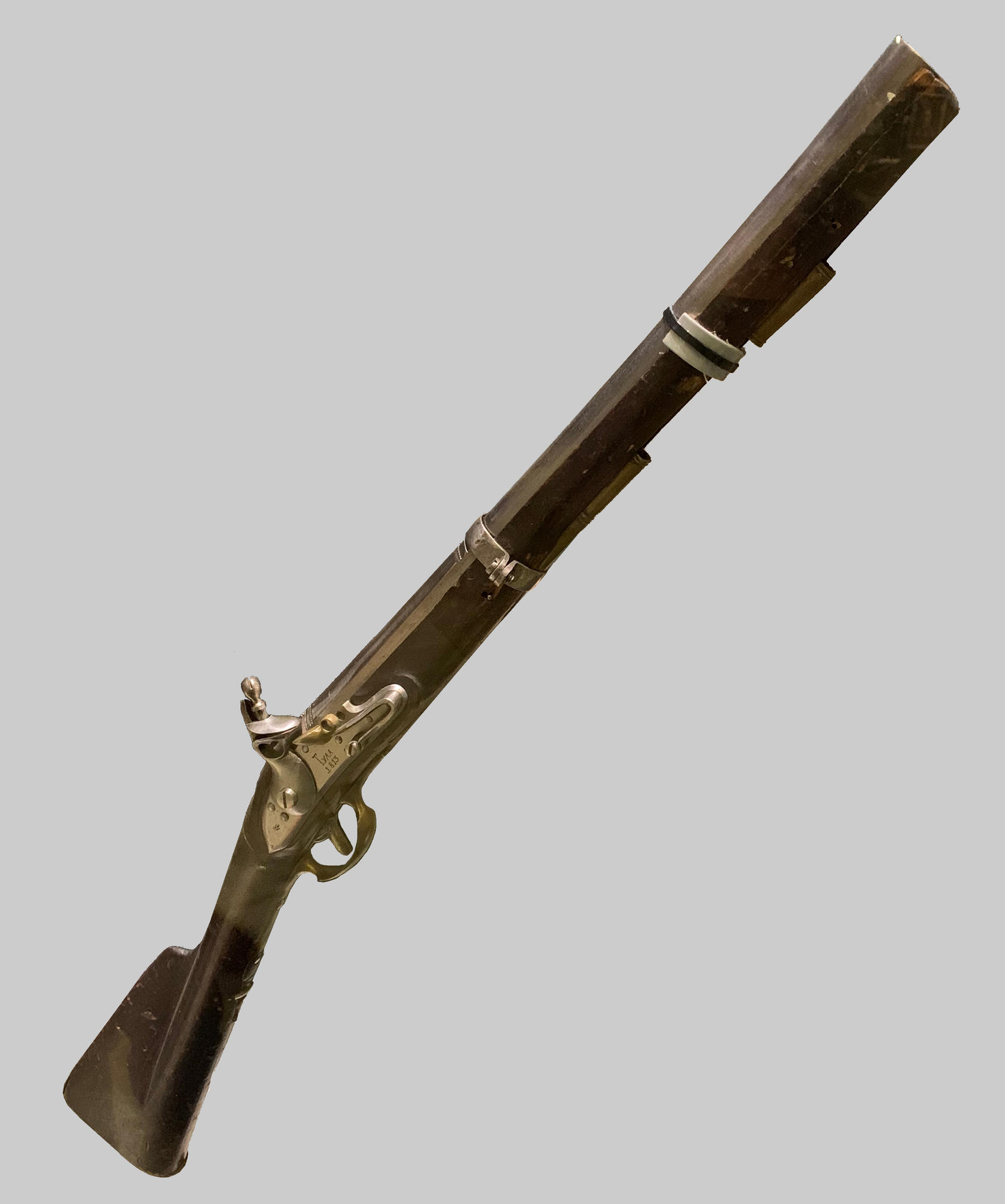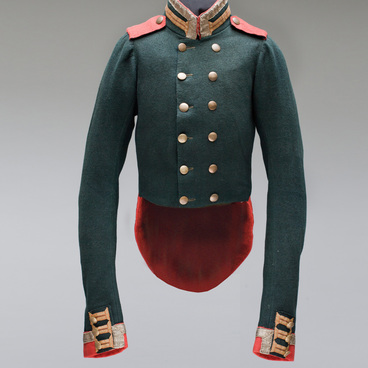The disastrous start of the war with Napoleon Bonaparte entailed significant losses not only of manpower, but of weapons as well. In this regard, the Emperor issued an edict, ordering to hand in the ‘Dragoon muskets’ (i.e., guns). Instead, the hussars had to be equipped with musketoons, and dragoons had only pistols left at their disposal.
Musketoon is a short, smooth-bore muzzle-loading shotgun, light and portable. In 1798, the Sestroretsk Arms Plant began manufacturing an advanced cavalry musketoon for the Imperial Guard Hussar Regiment based on the design of 1790. The bulk of the weapons were released in the following year, 1799.
Unlike the 1790 model, the new version had trigger guard ends made in the form of palmettes, and the overlay for locking screws, of a serpentine shape. An iron ring freely passed through the bracket allowing to thread a belt through it.
Such a mount allowed firing without removing the musketoon from the shoulder strap. When riding, it hung at the rider’s foot with the barrel up, and the bullet could not roll out of the barrel during the race. One platoon in each hussar squadron was equipped with this type of weapon; that platoon performed flanking.
Flanking is a tactical maneuver where several cavalrymen advanced freely before the squadron attacking in a tight formation and fired at the enemy on the move. As a rule, this caused real panic in the enemy ranks and even provoked the enemy to premature fire, which significantly increased the chances of success of the main attack.
In November 1812, the Artillery Department issued an order to Sestroretsk, Tula and Izhevsk arms factories to immediately start manufacturing the newly introduced weapons. At the same time, requests for samples of the musketoon were sent. The need for firearms was determined at 160 units for each of the eleven hussar regiments.
The director of the Sestroretsk Arms Plant, Lieutenant Colonel I.P. Lankry, responded to the request as follows: “As for the musketoons, we have none at the plant”. However, the plant produced them not only in 1799, but also in 1807. The reasons of Mr. Lankry’s negative answer remain a mystery; perhaps he simply did not know the facts.
Nevertheless, the Artillery Department managed to get a sample, after which the Sestroretsk and Tula plants began to work. Tula undertook to provide 200 musketoons, but how many units were actually manufactured is still unknown.
In August 1813, Major General Fedor Nikitich Voronov, director of the Tula Arms Plant, was ordered to produce 1,760 weapons. Each squadron set had to have uniform bullets. Voronov showed an enviable ingenuity, offering to drill the old-design bullets to the required caliber. This idea was greeted with enthusiasm by the higher authorities.
The musketoons of this type were in service until April 1818, when the hussars were rearmed with short rifles according to the Imperial edict. The riders of the Third Hussar Division were the last to surrender their musketoons in 1821.
Musketoon is a short, smooth-bore muzzle-loading shotgun, light and portable. In 1798, the Sestroretsk Arms Plant began manufacturing an advanced cavalry musketoon for the Imperial Guard Hussar Regiment based on the design of 1790. The bulk of the weapons were released in the following year, 1799.
Unlike the 1790 model, the new version had trigger guard ends made in the form of palmettes, and the overlay for locking screws, of a serpentine shape. An iron ring freely passed through the bracket allowing to thread a belt through it.
Such a mount allowed firing without removing the musketoon from the shoulder strap. When riding, it hung at the rider’s foot with the barrel up, and the bullet could not roll out of the barrel during the race. One platoon in each hussar squadron was equipped with this type of weapon; that platoon performed flanking.
Flanking is a tactical maneuver where several cavalrymen advanced freely before the squadron attacking in a tight formation and fired at the enemy on the move. As a rule, this caused real panic in the enemy ranks and even provoked the enemy to premature fire, which significantly increased the chances of success of the main attack.
In November 1812, the Artillery Department issued an order to Sestroretsk, Tula and Izhevsk arms factories to immediately start manufacturing the newly introduced weapons. At the same time, requests for samples of the musketoon were sent. The need for firearms was determined at 160 units for each of the eleven hussar regiments.
The director of the Sestroretsk Arms Plant, Lieutenant Colonel I.P. Lankry, responded to the request as follows: “As for the musketoons, we have none at the plant”. However, the plant produced them not only in 1799, but also in 1807. The reasons of Mr. Lankry’s negative answer remain a mystery; perhaps he simply did not know the facts.
Nevertheless, the Artillery Department managed to get a sample, after which the Sestroretsk and Tula plants began to work. Tula undertook to provide 200 musketoons, but how many units were actually manufactured is still unknown.
In August 1813, Major General Fedor Nikitich Voronov, director of the Tula Arms Plant, was ordered to produce 1,760 weapons. Each squadron set had to have uniform bullets. Voronov showed an enviable ingenuity, offering to drill the old-design bullets to the required caliber. This idea was greeted with enthusiasm by the higher authorities.
The musketoons of this type were in service until April 1818, when the hussars were rearmed with short rifles according to the Imperial edict. The riders of the Third Hussar Division were the last to surrender their musketoons in 1821.



